Ehagan was immediately taken with Velo, veil: what better name for illusionists who are called upon to serve as the veil before death, made to make death less fearsome, more approachable? It was Usoa who pointed to the word Edén, which called to her from one of the unfurled scrolls on the floor; and Haizea who demanded its meaning from Osoçais, who startled at being addressed by my daughters after moons of trying to buy their affections... I did not like it — I do not; it goes against all that I am; the first part of me that had rejected this idea altogether continued to reject even this — but it was I who said it first: Velo de Edén...
— from Cibilla de Velo de Edén, The Journals of Cibilla de Velo de Edén, Vol. 1, trans. Carolina Arroquia, ed. Ferdinanda Ibáñez (Oureros: The Edenveil Foundation)
house of the veils
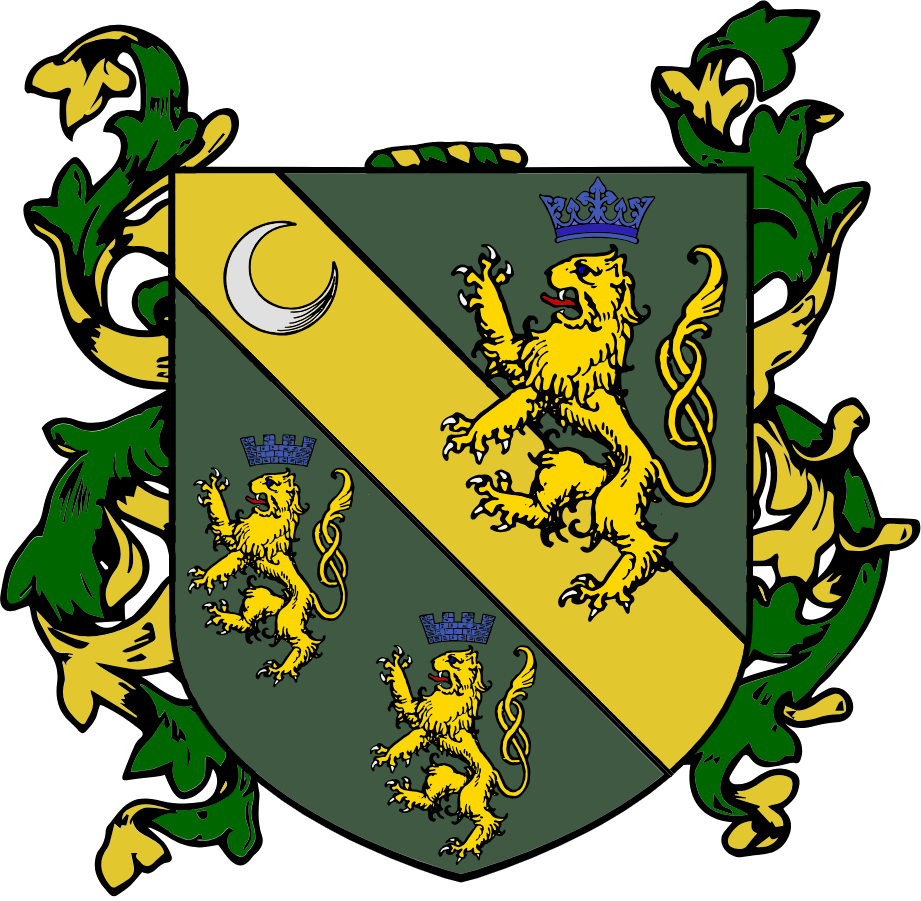
House Edenveil, formerly known as House Velo de Edén, are a prestigious Bascan family who played important roles throughout and in the aftermath of the Bascan Wars. Direct bloodline descendants of the Coven of Aminsál, the family originated in the city of Oremis, which remains their central power base. Though Edenveils are now more widespread, it is still a family tradition to make the annual pilgrimage to the ancestral estate.[1] Einar Edenveil, The Memory of Another Time (Oureros: University of Inkerza Press, XXXX).
Although the Edenveils were originally a family of illusionists, marriages with other esteemed families — a sign of the Church of Basca’s ever-growing favour — introduced the gift of fire into the bloodline. Over the years, they have since become better-known for their ability with the latter, as Edenveil fire has a particularly strange quality: something forged with Edenveil fire can only be unmade with Edenveil fire. The family are also famous for producing Echo Knights, capable of using their illusion magics to shape Echoes, or magical copies of themselves.
Once considered the mightiest arm of the Church militant,[2] Benedikt Reorre, The Divine Made Known: A History of the Church of Basca, trans. Opallina Ferox (Calgaremi: Calgaremi School of Theology Press, XXXX). the Edenveils' relationship with the Church deteriorated almost immediately in response to the formation of the Bascan Inquisition and its antagonistic position on witches and magics.[3] Kaspar del Alasterre, This World is Made of Fire: Northern Basca at War, trans. Jozef Ordoñez (Magra: Royal College Press, XXXX). With covens being driven out of Basca or otherwise eliminated outright, the Edenveils renamed themselves in the Common Tongue and rose as defenders of the Bascan witches‘ birthrights, in what some have called an act of repentance for ever siding with the Church in the first place. Over three separate uprisings, they proved their power against the Church and successfully drove the Inquisition out of Oremis, which became known as a haven for all magics. A boom of Inquisition sects and sympathisers in the later years of the Bascan Reconquest led to sudden manifestations of Echoers, all of whom became known as The Glorious Generation. Today, the Edenveils remain synonymous with Oremisian independence and the Bascan opposition.
The family’s ancestral home, Dawn’s Gate, sprawls across Ehagan’s Crown, Oremis’ easternmost hill. The property is large enough to have a family chapel, several mausolea and columbaria, multiple training grounds, barracks for the family’s private platoons, and free-standing houses for extended family, among other structures. It served as the inspiration for Swan’s Wall, home of the Inkerzan Edenveils.
Deunoro Edenveil had, even then, clearly dreamt that one day, Bascans would raise their own tokens of gratitude to the Edenveils, stalwart shields against all those that threatened what had been there before the Inquisition had arrived.
— Fell Tides (2022—)
The Coven of Aminsál
The Edenveils were originally known as members of the coven of Aminsál, which was established in the Oremis region of Basca long before the Church came, and in fact, even before Oremis was consolidated into a single duchy under House Volaans. The coven was named for their ancestor, the sorceress Aminsál.
Known for the extreme realism of her illusions, Aminsál remains infamous even among her own descendants, who feared and respected her ability to trap her foes in the fever sleep, an illusory world where the desires of one’s heart were granted… but not without a lurking sense of wrongness, an itch that could not be scratched: the fear that everything could be taken away in a moment’s notice. While the whole coven was renowned for their ability with illusions, only the most tenacious of Aminsál’s descendants — later, a strong concentration in the Edenveil line — had the capacity for fever sleep.
Like many Bascan witches of her time, Aminsál was drawn to Oremis due to the unnaturally large number of intersecting ley lines beneath it. However, the nature of her power — that innate control over another person’s derealisation — induced more fear than awe among the burgeoning covens of the fledgling settlement. None of them wanted to make a place for her, which spurred her into starting her own coven, welcoming like-minded witches of similar magics who wanted to hone their talents. Much to the shock and consternation of the other coven heads, casters flocked to Oremis to study with Aminsál and break bread with her after word spread that a caster like her was making the region her home.
Over time, many of the Oremisian covens overcame their uneasiness, learning to coexist peacefully with Aminsál and her followers. Aminsál even married a witch from another leading coven at the time, Anan de Ymorandi, from the Coven of Ymorandi, a circle of witches whose power lay with the sea. Eventually, the early Oremeños began turning to Aminsál and her fellow illusionists for mundane requests, like asking for their talents to help them sleep or for a moment of a dream to come to life.
Aminsál was known to be fearsome to her enemies, and considered anyone who threatened the peace in Oremis as such; but she was, at her core, a curious witch who leaned into nature and wanted a safe space to appreciate her witchhood’s tie to the cosmos, and her coven was known to use their abilities in the service of imagining what could be.
The strength of Aminsál’s gift carried on through her descendants, the only surviving branch eventually becoming House Edenveil, known first for their illusions, and then their Echoes, illusions of their casters made physical by magic.[4] Aminsál first appeared in Gillem de Astianax y Legarrda, A Legal, Political, and Geographical Survey of Witchery for the Reunified Kingdom of Basca (XXXX). To this day, Echoers continue to serve and defend Oremis and witchdom, the realisation of Aminsál’s first and biggest dream: to make Oremis her home.
The Proselytisation
In Basca’s early history, the coven tended to stay uninvolved in the numerous skirmishes between the different powers that came to rule the country, unless Oremis itself was directly threatened. They preferred the safety of relative anonymity, at least until the Church rose to power and drew them out of the shadows.
In a bid to secure Oremis as an advantageous stronghold in the heart of Basca, the Church approached Ehagan of Aminsál, the head of the coven at the time and one of Aminsál’s direct descendants. They sent Iñigo de Osoçais, Archbishop of Calgaremi, a nearby staunchly Church-aligned territory, to negotiate. Only a very tightly-controlled select few knew that Osoçais was also a wizard of considerable aptitude. The Coven of Aminsál was chosen because of their popularity with the Oremeños, though the potency of their magic highly favoured them during consideration.[5] Reorre, The Divine Made Known.
After lengthy secret negotiations involving only the highest echelons of the Church, a select few trusted members of the coven, and the reigning power in Basca at the time, the coven agreed to work with the Church’s mission to proselytise in the area in exchange for territorial autonomy and security. It is for this reason that the Edenveils are considered the true power behind Oremis, despite the existence of House Volaans, Oremis’ actual ruling family. At the insistence of Ehagan‘s wife Cibilla, the coven elicited a promise from the Church to treat them as allies, not subordinates: “No Church,” Cibilla wrote in her private diaries, “no godhood that takes from the Mothers and the land, will ever turn us away from the true heart of power!”[6] Cibilla de Velo de Edén, The Journals of Cibilla de Velo de Edén, Vol. 1, trans. Carolina Arroquia, ed. Ferdinanda Ibáñez (Oureros: The Edenveil Foundation Press, XXXX).
Under the agreement, the coven was given the name Velo de Edén, Bascan for veil of Eden, such that Ehagan became known as Ehagan de Velo de Edén rather than Ehagan de Aminsál. (It should be noted here that thus far, the particle de has indicated belongong to a specific coven, such as Ehagan de Aminsál and, above, Anan de Ymorandi. Once Oremis was delivered to the Church, however, the particle de generally denoted a name of the Bascan aristocracy. House Velo de Edén refused a substantive title, as Ehagan did not want his family beholden to a title that could be taken away, so in their case, “de” only meant Church favour.) Some covens who shared Oremis with them viewed their collaboration with the Church as turning traitor against the covens themselves, while others tried to use their connections with the new “ruling power” of Oremis to ensure their own safety, too. This resulted in many politically charged alliances among the covens, and even between voidborn families who wished to earn the Church’s regard.
When the Velo de Edén rose to the top of Oremisian hierarchy, untitled but backed by the age of their bloodline and their proximity to the Church, Oremis was sometimes disparagingly called a protectorate or a puppet state. While the family's status amongst the voidborn population fluctuated between the exchanges of power suffered by Northern Basca, they continued to amass a great reputation among the covens, and even greater wealth, much of which was displayed through artistic and architectural commissions from the leading artists of the time. Between XXXX–XXXZ, they spearheaded renovations for Oremis Archcathedral, and retained prominence among the witches when it became clear that their priority was the preservation of their birthright, not the Church. It is widely believed that the Edenveil coffers alone afford Oremis a layer of protection above what any city guard could.[7] Lukrezia Orive, "The Price of Power in NNth-Century Oremis," Defence Studies 28, no. 2 (XXXX): 394–431.
“Daughter mine,” he’d said, “mi llamarád,” and then he’d looked at her sidelong, “it was not Zilar who inherited my eyes.”
— Fell Tides (2022—)
on echo knights
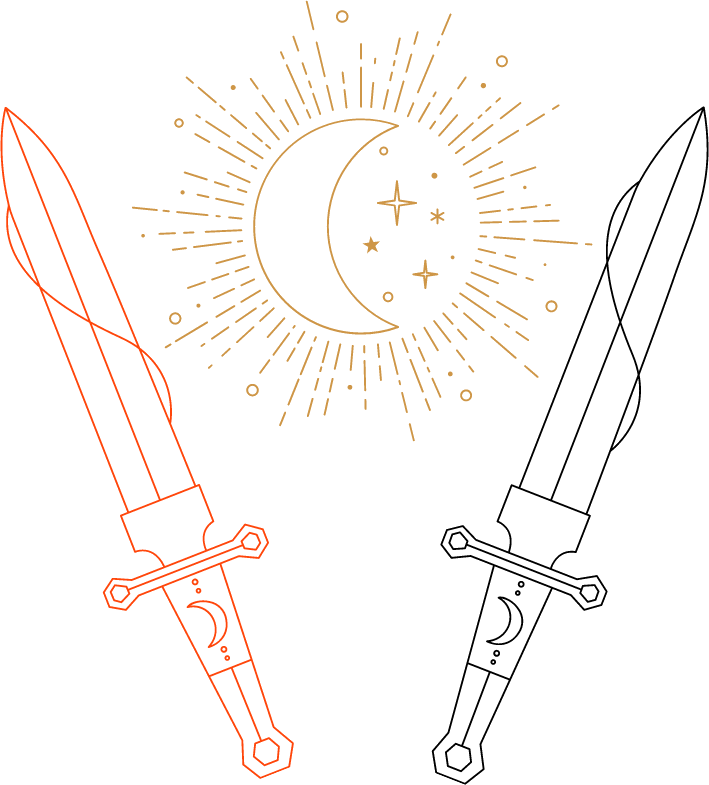
Much of what we know today about the Echo ability, the hallmark of the Edenveil line, comes from Emilio dela Cruz’s The Witch of War: A Biography of Deunoro Edenveil (Oremis: National University of Basca Press), the seminal text on Deunoro I. Dela Cruz makes use of sources from the archives at Swan’s Wall, however, these are only copies of the originals, all of which are held in the archives at Dawn’s Gate, which have never before been accessible to the public. All personal, professional, and academic requests for access to the Edenveil archives in Oremis have been denied. As a result, most of the information regarding the Edenveils, and especially the Echoes, remains shrouded in mystery, and various tales and myths about the family are nearly impossible to corroborate. However, based off what we do know, there are some things that we can take as fact, at least until information emerges to the contrary.
The Echo ability manifests alongside the Edenveil gift of fire, but only in a very select few. It is rare to have more than one or two in a generation, and sometimes, the gift lies dormant and skips a generation altogether. These “Echo knights” have the ability to produce an Echo of themselves, which grows in sterngth and staying power as its caster’s strength, stamina, and ability in battle grows. Put simply, these Echoes function as substitutes of their caster, able to be deployed at another site of the battleground, making it invaluable against larger, power powerful, or more numerous foes.
Magic made physical, these are solid-bodied beings capable of absorbing hits for their caster, or even felling opponents. However, because they are only a facsimile of the actual knight, their speed and strength are only a fraction of their caster’s. Echoes follow their casters’ commands until they are destroyed or recalled; the destruction of an Echo does not hurt the caster, and practised Echoers can usually cast again, but never more than one at any given time. Deunoro Edenveil is considered a legend in his own family for being able to cast, control, and wield two Echoes simultaneously — a demonstration of his power and prowess.[8] Irune Olabiaga and Theodwin Sèyres, Lions of Fire and Echo: The Glorious Generation and the Formation of Bascan Military Strategy (Magra: University of Magra Press, XXVX).
One function of the Echo is to scout. An Echo can be sent ahead by its caster, who could then assume Seeing, Hearing, and Speaking through their Echo — but not without causing them to temporarily lose the ability to see, hear, and speak in their own body while the Echo was deployed in this way. Echoes themselves could not cast fire, because they were only manifestations of magic, and thus not of the blood; however, Echoers would cast through them.
the glorious generation
Between XXAB–XXCD, the children of Ehagan V and Katixa de Zierrantz surprised the family at large when all of them manifested as Echoers. Many of Ehagan's own nieces and nephews had manifested the same gift in subsequent years. The eldest of his children was Deunoro, later called Churchbane; to this day, Deunoro remains one of the most notable members of the family. His exploits were known far and wide across Basca, and he dominated Oremisian politics without even lifting a finger thanks to his reputation as the bane of the Inquisition.[9] dela Cruz, The Witch of War. Deunoro's numerous decisive victories against Church forces ensured Oremis's status as a haven for witches and other practitioners of the many schools of magic across the country, even when Northern Basca itself became more hostile due to Inquisition activity.
Deunoro had three younger siblings: Oihane, known as Oihane of the Hundred Flames, more noted for her abilities as a fire mage rather than an Echoer; and the twins Osozor, The Flare, and Luine, The Vanguard, together called the Lions of Oremis. Along with their cousins who similarly manifested, they were known as The Glorious Generation, and filled Oremis's myths and legends to the brim with their valorous deeds. Due to the armed lions on the Edenveil coat of arms, the Glorious Generation are also sometimes referred to as The Pride of Oremis.[10] Olabiaga and Sèyres, Lions of Fire and Echo.
☾ The Churchbane Though his parents hoped that their first son and eldest child would manifest a deep well of magic as his parents had done, neither Ehagan nor Katixa could have anticipated the power in Deunoro that eventually let him cast two Echoes simultaneously, a feat no Edenveil before or since has ever been able to accomplish. Deunoro proudly took his epithet from the infamous High Inquisitor, Mefael de Béjar, who called Deunoro's twin Echoes the bane of the Church — blasphemy incarnate.
☆ The Hundred Flames Although Oihane manifested similarly to her siblings, she was the only one out of the three of them to prefer fire to their rarer gift. It enabled her to rescue Deunoro from the clutches of Béjar and the Inquisition during the Siege of Magra, where, in her desperation to save him, she summoned a hundred spheres of fire to attack Church forces. Deunoro and Oihane had a falling-out in 15XX, leading to her exile from Oremis.
❀ The Flare Like his older brother, Osozor saw no reason to turn to their gift of fire and used his Echo exclusively — at least, not until after Oihane’s exile. In the aftermath, Osozor re-applied himself to techniques he previously eschewed so that no enemy could use their lack of fire against them. He earned his name during the Liberation of Calgaremi, when he rescued hostages held by Béjar and his men; one of the children remembered seeing a flare like the sun headed towards us, like salvation.
❀ The Vanguard If Deunoro was the sword of Oremis, then Luine was its shield. When she was on the battlefield with her eldest brother, and before Oihane’s exile, Deunoro often led the charge with Oihane on his right and Luine on his left. Afterwards, Luine and her Echo played the part. An expert swordswoman, some say that Luine would have carried the ancestral sword, Vengeance, had Deunoro not wished to gift it to his only son at the earliest possible opportunity.
the gift of fire
Fire was introduced into the Edenveil line through The Fire Brides. The first of these was Isabela Mondexar, the only daughter of the influential Afonso Mondexar, a fire mage noted for the dynamism of his casting. With this line in danger of becoming extinct, the politician Oderigo Sansevna suggested a marriage between Isabela and the future Demas I as a way of preserving such a potent gift.[11] Oderigo Sansevna, The Collected Letters of Oderigo Sansevna, XXYX—XXZX, trans. Zita Dávila (Cortesi: Cortesi University Press, XXZV). Sansevna had other motivations: seeking to elevate himself in the Church's esteem, he knew that he could get in their good graces by ingratiating himself to the Edenveils, their right hand. For some years, the Edenveils maintained that only the illusions were theirs, and that they were merely custodians of the Mondexar fire, but with the advent of subsequent marriages to other fire heiresses, they eventually accepted the gift as their own. The Brides are so honoured at Dawn's Gate in the Hall of the Fire Brides, where their coats of arms are carved into the spandrels.[12] Valeria Sigüenza, Veiled: Public Space at Dawn's Gate (Oremis: Oremis College Press, XXZX). Their arms are as follows:
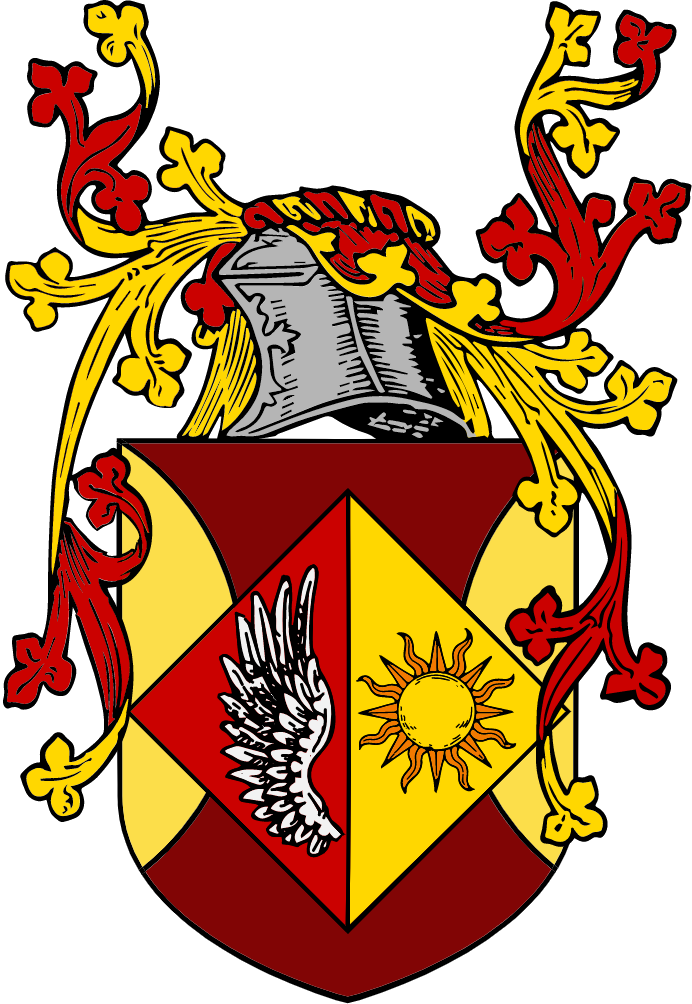
Isabela Mondexar The Sunsaint Wife of Demas I
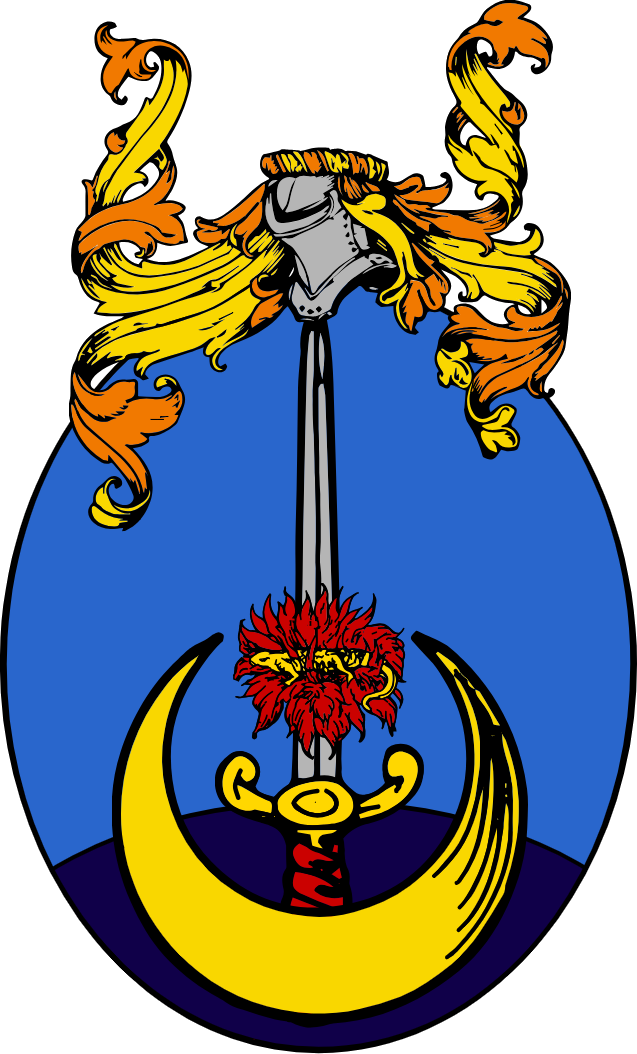
Sofia de Coronado The Jewel of Crownhall Wife of Baztán I
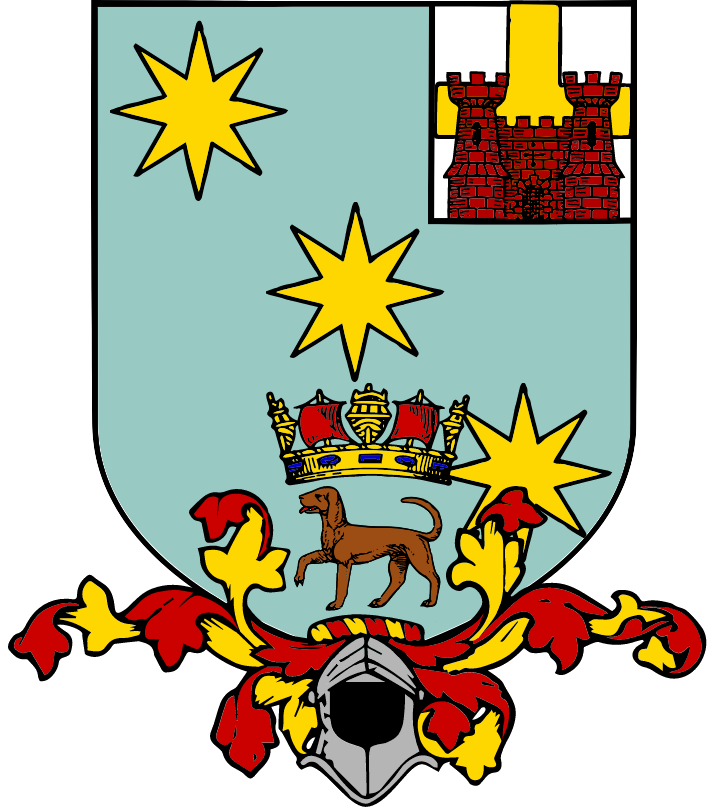
Ysmene Entenza The Spear of the Mountain Wife of Ehagan III
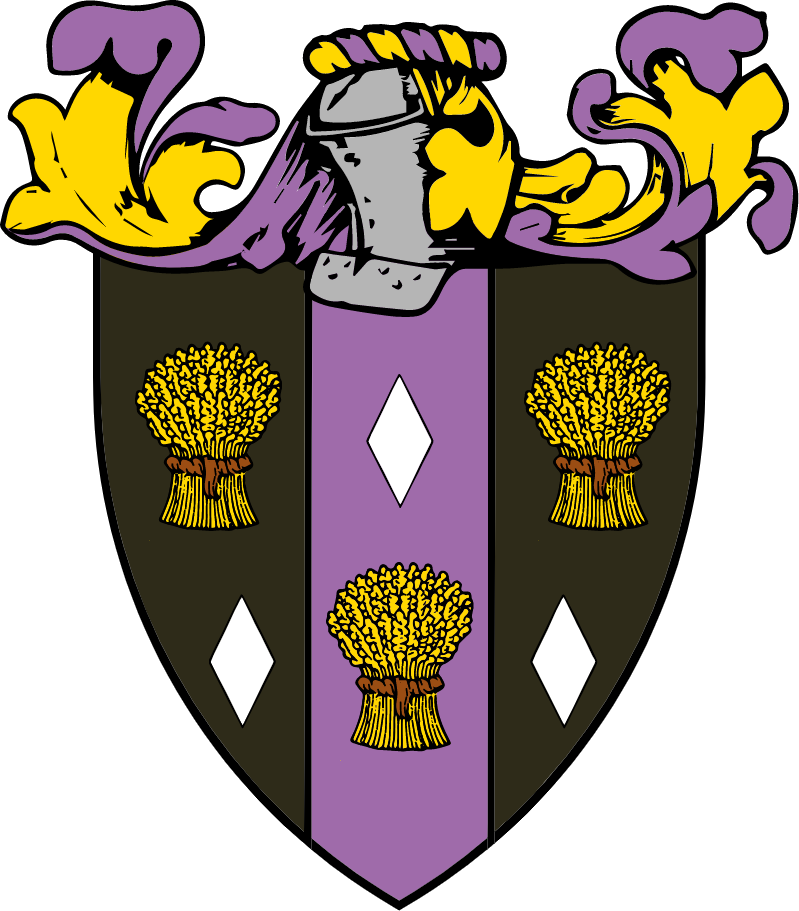
Azane de Seoane The Fire of the Coasts Wife of Osozor I
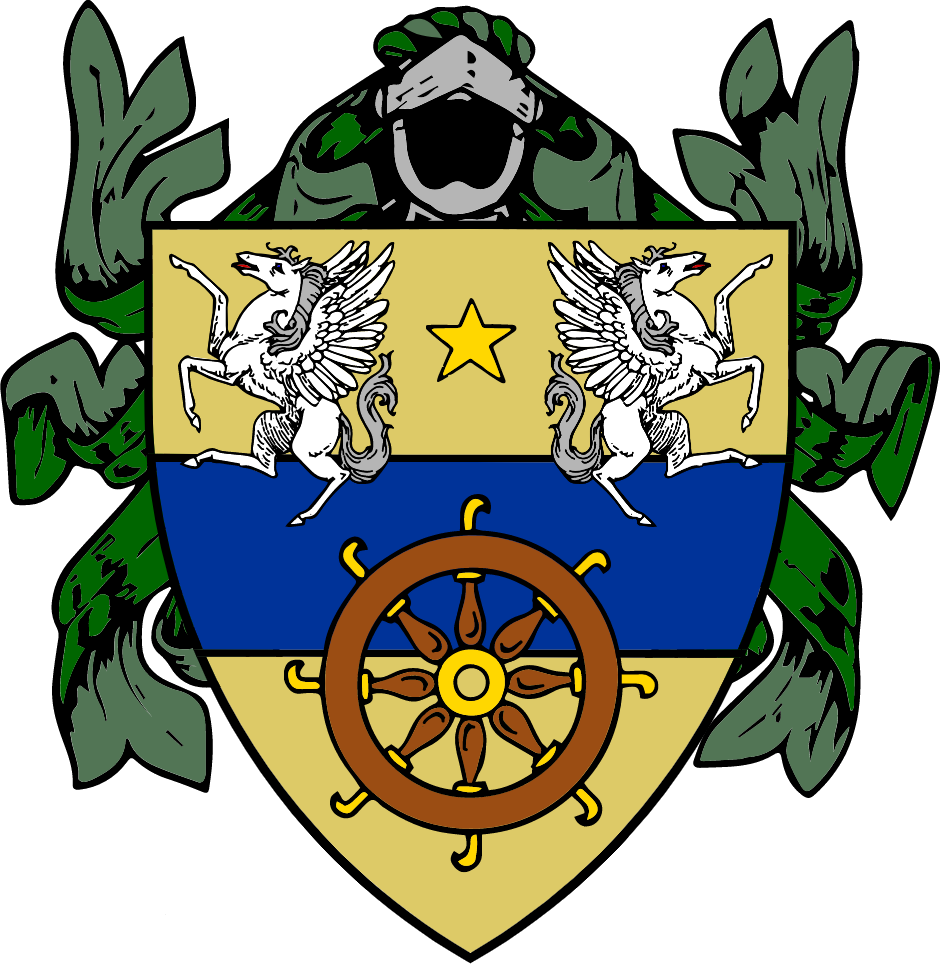
Eleanor de Sanhueza The Extinguishing Star Wife of Baztán II
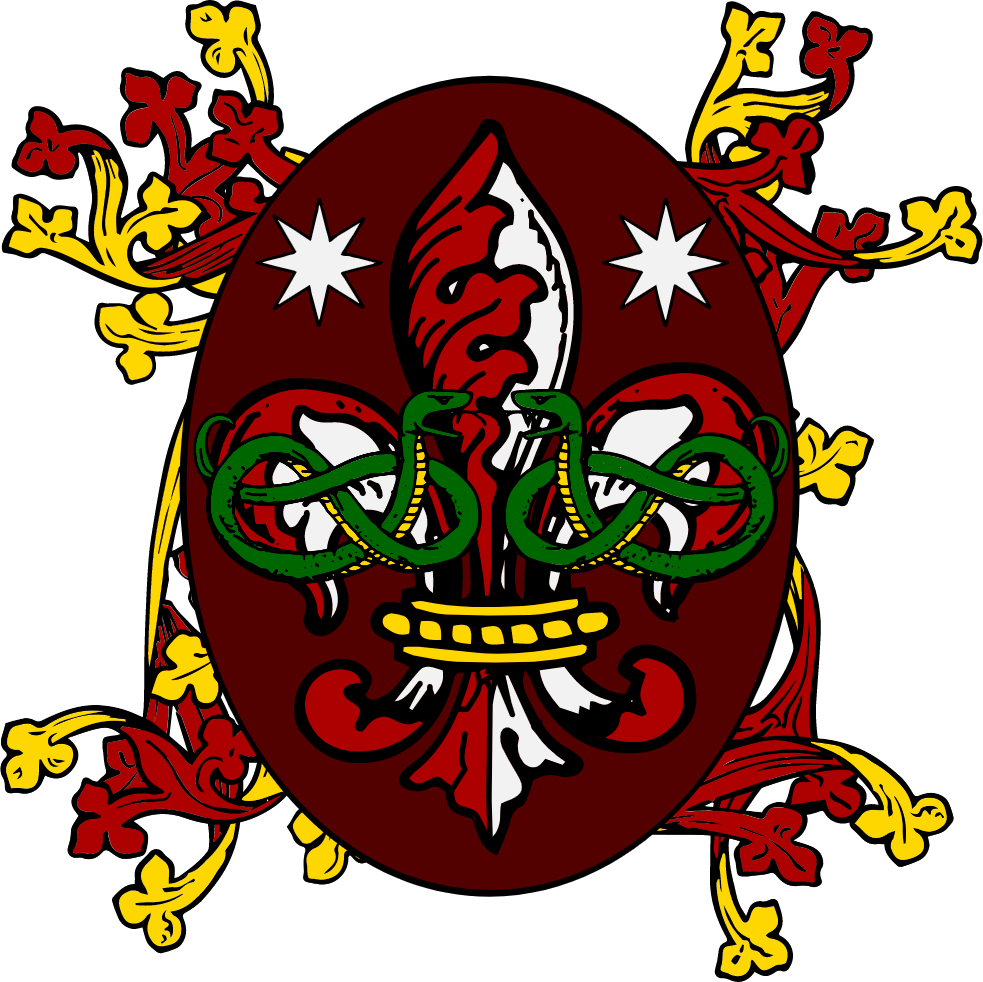
Antonia Veracruz The Foretold Fire Wife of Osedo I
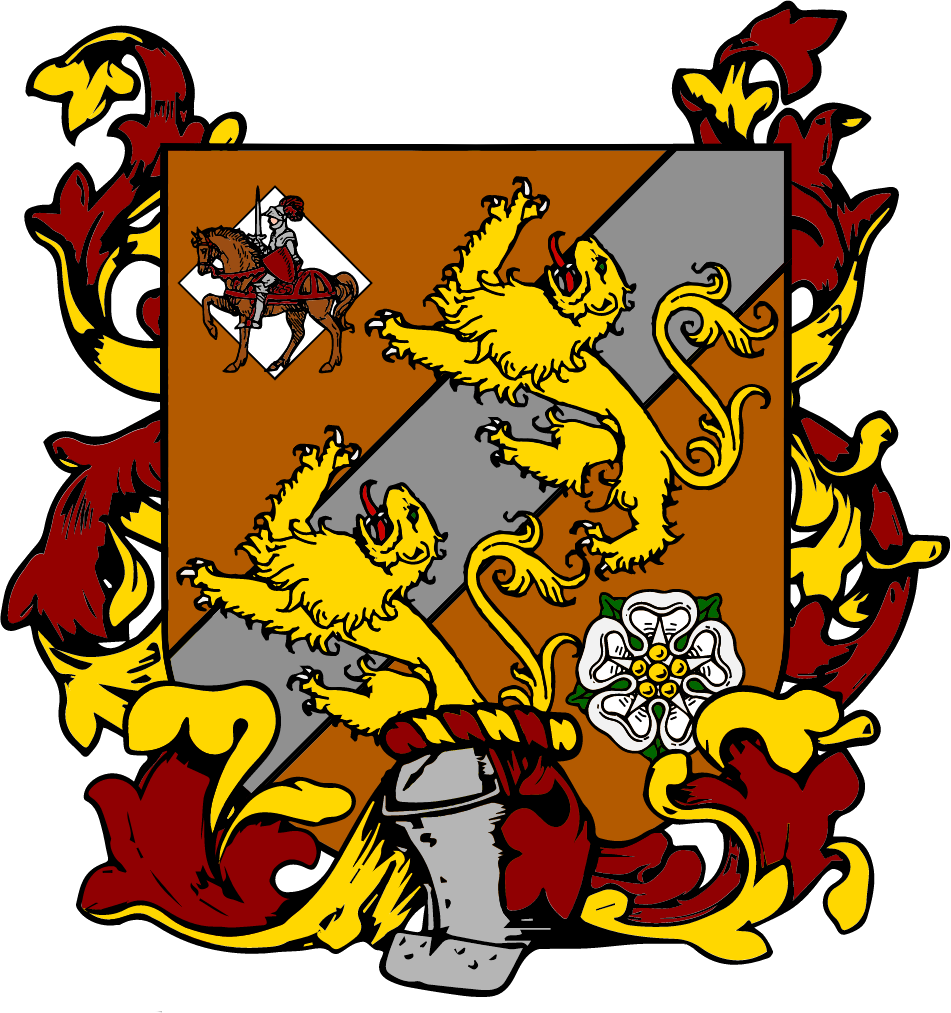
Carolina de Leon The Anchoring Fire Wife of Demas II
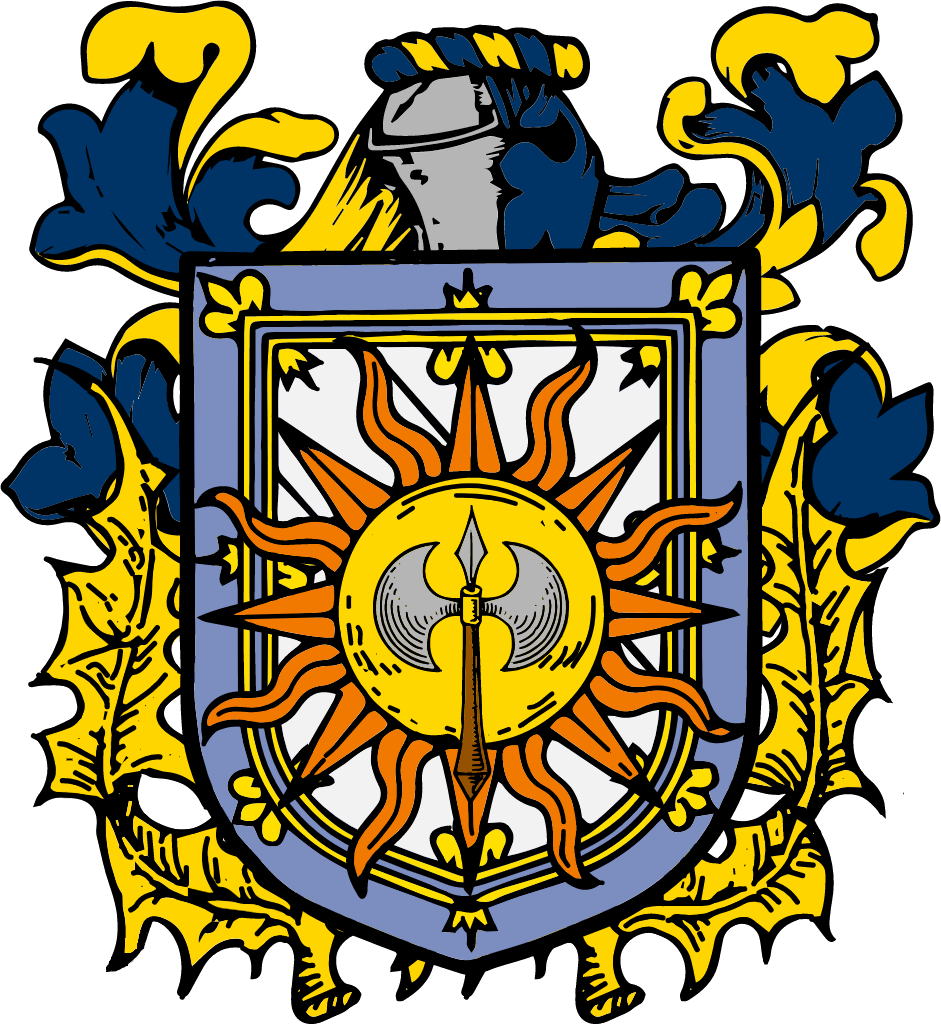
Alba de Menezes The Hammer of Talvareyna Wife of Osozor II
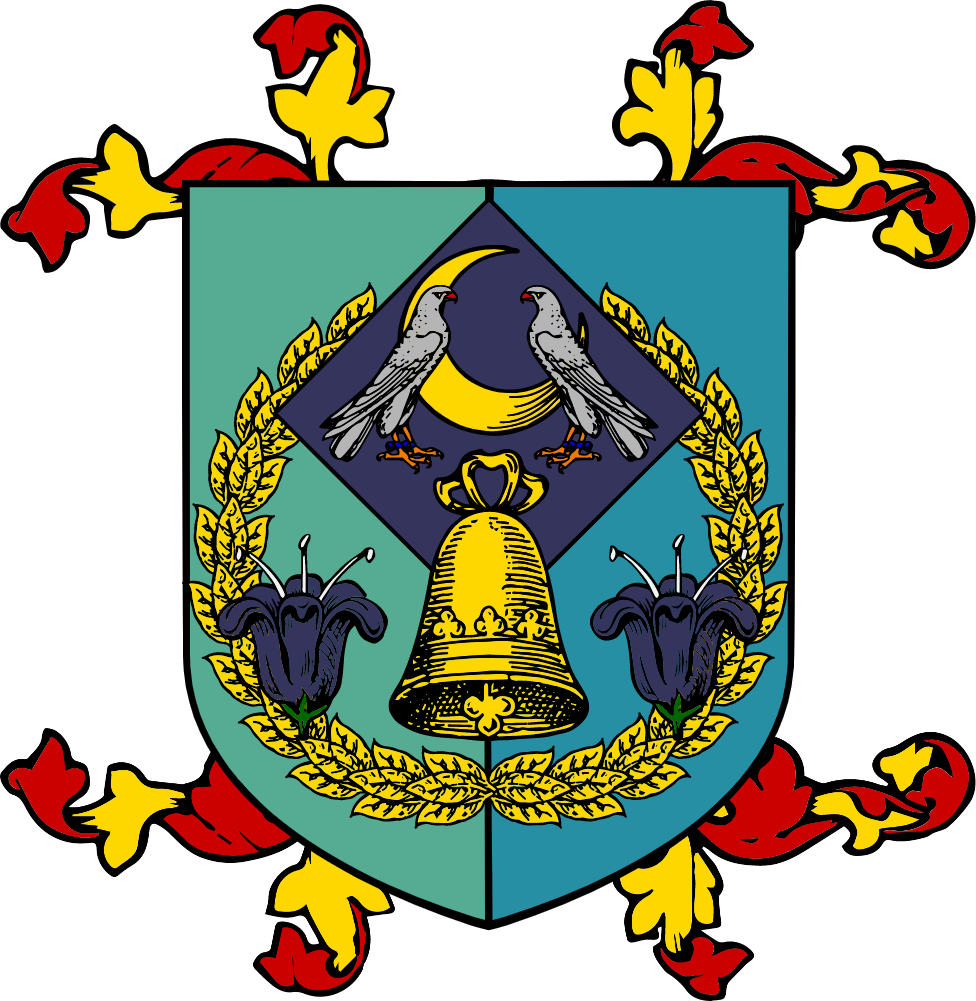
Katixa de Zierrantz The Light of Lhión Wife of Ehagan V
In a few generations, the Edenveils became more noted for their fire than their illusions, save for the Echoes, whose rarity made those who manifested them remarkable by default. For a time, the presence of two gifts caused an ideological split within the family — those who preferred the fire, and those who preferred their illusions and Echoes — but the rarity of Echoing eventually led to their acceptance as anomalies when fire proved to be more abundant. Knights of the family, whether they leant to the fire or to the Echo, all trained with the other preferred Edenveil weapon — the sword — and became paragons of knighthood in Oremis, first through their duty to the Church, and later, through their vicious defence of the covens.
Between Echo swordsmen and fire swordsmen, no Edenveil had ever mastered all three at once, tending to prefer one over the other; no Edenveil had ever chosen only Echo and fire, either, without a weapon. No one knew the reason why Echo and fire were incompatible without the buffer of another focus between them, but it is said that some Edenveils who tried to truly master both gifts fell ill, or went mad.[13] dela Cruz, The Witch of War.
Though all Edenveils were attuned to fire following the introduction of the Fire Brides, some still stood out because of their innate ability and raw strength. One such witch was Deunoro's sister Oihane, who earned her nickname, Oihane of the Hundred Flames, for the precision of her casting and her victory during the Siege of Magra.[14] Olabiaga and Sèyres, Lions of Fire and Echo. Another was Deunoro's son Zilar, called Lightning Lord for the ferocity of his casting that, when angered, manifested in lightning; he was also called Sunglaive because he fought with a sword constructed out of fire.[15] Guerin Adiran, "The Sun in the North: Zilar I and the Formation of the Edenveil Mythos in NNth-Century Oureros," Inkerzan Studies 16, no. 4 (XXXX): 72—95.
a tale passed between those touched by fire
In the days when the sky still touched the sea, the First Mother hung the comb for her long, dark hair and a necklace of beautiful gems onto the sky so that she could easily pound food into her mortar and pestle.
Each time she raised her pestle, she nudged the sky higher, until one day, while cooking over the fire, she burnt herself. In her pain, she struck the sky harder than she ever had before.
The sky rose, taking her things with it. When she threw the fire to try and recover them, it, too, stayed in the sky: the comb became the moon, the gems the stars, and the fire the sun.
The First Mother thought all was lost, but there, still with her, was a little ember that she had missed, that she had not thrown, and that little ember, once she cultivated it, became the First Fire, the source of the fire witches' power.
She touched the names of the knights who had come before her, ancestors she'd never known littering the inside of her gorget and pressing into her throat; names down her arms, right where her vambraces ended and met the gauntlets at her wrists as she tugged them on, thumbs caressing the lilies; on her left poleyn, the carved name of her father, the giant whose shoulders she stood on...
— Fell Tides (2022—)
house edenveil
House Edenveil's ancestry stretches long before they were named by the Church. The generations below begin with Ehagan I, the first Aminsaleño to be named by the Church, in addition to being the eldest living descendant of Aminsál at the time, and run up until the Liberation Generation, or the children of Deunoro Churchbane.
House Velo de Edén
-
EHAGAN I
The Deathcaller CIBILLA
Coven of Sixeni-
EHAGAN II
The Trueborn Echo SPOUSE
0000 — 0000-
ARIAS
0000 — 0000 SPOUSE
0000 — 0000- Older
Sister -
ELAZAR
0000 — 0000 - Younger
Brother
- Older
- GRANDCHILD
0000 — 0000 - GRANDCHILD
0000 — 0000
-
ARIAS
- 2 Brothers
3 Sisters
-
EHAGAN II
My husband is no god, I know better; but that does not stop Oremis from building his pedestal, or others from coming to stand at his feet. Pwés! If this Calgaremeño wants to break his own back; to set his own feast; to pave his own road; to try and convince us — Ehagan! blood as old as this earth, blood lining these forests since before these borders were drawn! no Oremis, no Calgaremi, no lofty men on their horses — that our strength submits to the nameless one favoured by this Archbishop — what a word; what a title; from where does his dignity derive if it does not come from wizard, and how? — then let him try and see what it means to keep the Deathcaller in the dark, and let him go mad if he makes this mistake again, or I am not one with these woods.— from Cibilla de Velo de Edén, The Journals of Cibilla de Velo de Edén, Vol. 1, trans. Carolina Arroquia, ed. Ferdinanda Ibáñez (Oureros: The Edenveil Foundation Press)
Ehagan I was responsible for negotiating the covenant between the Coven of Aminsál and the Church of Basca, by way of the Osoçais Accord. An extraordinarily powerful witch, it was said that he could cast illusions so realistic, he was capable of trapping an enemy inside their own mind, which made many fear him as much as they loved and respected him. For the strength of his magic, he was called a trueborn Aminsaleño.
Lorem ipsum dolor sit amet, consectetur adipisicing elit, sed do eiusmod tempor incididunt ut labore et dolore magna aliqua. Ut enim ad minim veniam, quis nostrud exercitation ullamco laboris nisi ut aliquip ex ea commodo consequat.
Lorem ipsum dolor sit amet, consectetur adipisicing elit, sed do eiusmod tempor incididunt ut labore et dolore magna aliqua. Ut enim ad minim veniam, quis nostrud exercitation ullamco laboris nisi ut aliquip ex ea commodo consequat.
The Advent of the Edenveils
-
ELAZAR
[ — ] SPOUSE
[ — ]-
DEMAS I
The Golden Echoer ISABELA
House Mondexar- BAZTÁN I
Sun Sorcerer SOFIA
House Coronado- EHAGAN III
0000 — 0000 - ALSEIDA
The Dove Knight - Younger
Sister
- EHAGAN III
- MAIALENNE
Fire Witch - AINARA
Illusion Witch - ZERU
Fire Witch - IHARIS
Fire Witch
- BAZTÁN I
- 1 Brother
2 Sisters
-
DEMAS I
My husband is no god, I know better; but that does not stop Oremis from building his pedestal, or others from coming to stand at his feet. Pwés! If this Calgaremeño wants to break his own back; to set his own feast; to pave his own road; to try and convince us — Ehagan! blood as old as this earth, blood lining these forests since before these borders were drawn! no Oremis, no Calgaremi, no lofty men on their horses — that our strength submits to the nameless one favoured by this Archbishop — what a word; what a title; from where does his dignity derive if it does not come from wizard, and how? — then let him try and see what it means to keep the Deathcaller in the dark, and let him go mad if he makes this mistake again, or I am not one with these woods.— from Cibilla de Velo de Edén, The Journals of Cibilla de Velo de Edén, Vol. 1, trans. Carolina Arroquia, ed. Ferdinanda Ibáñez (Oureros: The Edenveil Foundation Press)
Ehagan I was responsible for negotiating the covenant between the Coven of Aminsál and the Church of Basca, by way of the Osoçais Accord. An extraordinarily powerful witch, it was said that he could cast illusions so realistic, he was capable of trapping an enemy inside their own mind, which made many fear him as much as they loved and respected him. For the strength of his magic, he was called a trueborn Aminsaleño.
Lorem ipsum dolor sit amet, consectetur adipisicing elit, sed do eiusmod tempor incididunt ut labore et dolore magna aliqua. Ut enim ad minim veniam, quis nostrud exercitation ullamco laboris nisi ut aliquip ex ea commodo consequat.
Lorem ipsum dolor sit amet, consectetur adipisicing elit, sed do eiusmod tempor incididunt ut labore et dolore magna aliqua. Ut enim ad minim veniam, quis nostrud exercitation ullamco laboris nisi ut aliquip ex ea commodo consequat.
Lorem ipsum dolor sit amet, consectetur adipisicing elit, sed do eiusmod tempor incididunt ut labore et dolore magna aliqua. Ut enim ad minim veniam, quis nostrud exercitation ullamco laboris nisi ut aliquip ex ea commodo consequat.
Lorem ipsum dolor sit amet, consectetur adipisicing elit, sed do eiusmod tempor incididunt ut labore et dolore magna aliqua. Ut enim ad minim veniam, quis nostrud exercitation ullamco laboris nisi ut aliquip ex ea commodo consequat.
In the Time of Uprising
-
EHAGAN III
The Liberator YSMENE
House Entenza-
OSOZOR I
[ — ] AZANE
House Seoane- BAZTÁN II
The Unfortunate ELEONORA
House Sanhueza- No children; line goes to Ehagan.
- EHAGAN IV
The Firebrand ULVIKA
House Arrazola- OSEDO I
The Wicked Sun - Younger
Sisters - DEMAS II
The Chosen Blade
- OSEDO I
- BAZTÁN II
- Younger
Siblings
-
OSOZOR I
Lorem ipsum dolor sit amet, consectetur adipisicing elit, sed do eiusmod tempor incididunt ut labore et dolore magna aliqua. Ut enim ad minim veniam, quis nostrud exercitation ullamco laboris nisi ut aliquip ex ea commodo consequat.
Lorem ipsum dolor sit amet, consectetur adipisicing elit, sed do eiusmod tempor incididunt ut labore et dolore magna aliqua. Ut enim ad minim veniam, quis nostrud exercitation ullamco laboris nisi ut aliquip ex ea commodo consequat.
Lorem ipsum dolor sit amet, consectetur adipisicing elit, sed do eiusmod tempor incididunt ut labore et dolore magna aliqua. Ut enim ad minim veniam, quis nostrud exercitation ullamco laboris nisi ut aliquip ex ea commodo consequat.
Lorem ipsum dolor sit amet, consectetur adipisicing elit, sed do eiusmod tempor incididunt ut labore et dolore magna aliqua. Ut enim ad minim veniam, quis nostrud exercitation ullamco laboris nisi ut aliquip ex ea commodo consequat.
The Edenveil War
-
EHAGAN IV
The Firebrand-
OSEDO I
[ — ] ANTONIA
House Veracruz- No legitimate children.
- DEMAS II
The Chosen Blade CAROLINA
House Leon- BAZTÁN III
The Sunrise Lord SPOUSE
[ — ]- DEMAS III
[—] - VRAIKAR
The Sunforge - 2 Younger
Siblings
- DEMAS III
- ELIA OF THE CHAINS
- SERA
The Little Moon
- BAZTÁN III
-
OSEDO I
Lorem ipsum dolor sit amet, consectetur adipisicing elit, sed do eiusmod tempor incididunt ut labore et dolore magna aliqua. Ut enim ad minim veniam, quis nostrud exercitation ullamco laboris nisi ut aliquip ex ea commodo consequat.
Lorem ipsum dolor sit amet, consectetur adipisicing elit, sed do eiusmod tempor incididunt ut labore et dolore magna aliqua. Ut enim ad minim veniam, quis nostrud exercitation ullamco laboris nisi ut aliquip ex ea commodo consequat.
Lorem ipsum dolor sit amet, consectetur adipisicing elit, sed do eiusmod tempor incididunt ut labore et dolore magna aliqua. Ut enim ad minim veniam, quis nostrud exercitation ullamco laboris nisi ut aliquip ex ea commodo consequat.
Lorem ipsum dolor sit amet, consectetur adipisicing elit, sed do eiusmod tempor incididunt ut labore et dolore magna aliqua. Ut enim ad minim veniam, quis nostrud exercitation ullamco laboris nisi ut aliquip ex ea commodo consequat.
The Glorious Generation
-
DEMAS III
[ — ] THEODORA
House Ameurst- Three Older
Sisters - OSOZOR II
The Lion at Sunset ALBA
House Menezes- EHAGAN V
[ — ] KATIXA
House Zierrantz- DEUNORO I
The Churchbane - OIHANE
The Balefire - OSOZOR
The Flare - LUINE
The Vanguard
- DEUNORO I
- 4 Younger
Siblings- Cousins of the Glorious Generation
- EHAGAN V
- Three Older
Lorem ipsum dolor sit amet, consectetur adipisicing elit, sed do eiusmod tempor incididunt ut labore et dolore magna aliqua. Ut enim ad minim veniam, quis nostrud exercitation ullamco laboris nisi ut aliquip ex ea commodo consequat.
Lorem ipsum dolor sit amet, consectetur adipisicing elit, sed do eiusmod tempor incididunt ut labore et dolore magna aliqua. Ut enim ad minim veniam, quis nostrud exercitation ullamco laboris nisi ut aliquip ex ea commodo consequat.
Lorem ipsum dolor sit amet, consectetur adipisicing elit, sed do eiusmod tempor incididunt ut labore et dolore magna aliqua. Ut enim ad minim veniam, quis nostrud exercitation ullamco laboris nisi ut aliquip ex ea commodo consequat.
Lorem ipsum dolor sit amet, consectetur adipisicing elit, sed do eiusmod tempor incididunt ut labore et dolore magna aliqua. Ut enim ad minim veniam, quis nostrud exercitation ullamco laboris nisi ut aliquip ex ea commodo consequat.
In the Time of Liberation
-
DEUNORO I
The Churchbane ESKARNE
House de la Cerda- ZILAR
The Sunglaive - IZAR
The Eye of Oremis - IDOYA
The Bitter Blade - GOIZANE
The Dreamguide
- ZILAR
My husband is no god, I know better; but that does not stop Oremis from building his pedestal, or others from coming to stand at his feet. Pwés! If this Calgaremeño wants to break his own back; to set his own feast; to pave his own road; to try and convince us — Ehagan! blood as old as this earth, blood lining these forests since before these borders were drawn! no Oremis, no Calgaremi, no lofty men on their horses — that our strength submits to the nameless one favoured by this Archbishop — what a word; what a title; from where does his dignity derive if it does not come from wizard, and how? — then let him try and see what it means to keep the Deathcaller in the dark, and let him go mad if he makes this mistake again, or I am not one with these woods.— from Cibilla de Velo de Edén, The Journals of Cibilla de Velo de Edén, Vol. 1, trans. Carolina Arroquia, ed. Ferdinanda Ibáñez (Oureros: The Edenveil Foundation Press)
Ehagan I was responsible for negotiating the covenant between the Coven of Aminsál and the Church of Basca, by way of the Osoçais Accord. An extraordinarily powerful witch, it was said that he could cast illusions so realistic, he was capable of trapping an enemy inside their own mind, which made many fear him as much as they loved and respected him. For the strength of his magic, he was called a trueborn Aminsaleño.
Lorem ipsum dolor sit amet, consectetur adipisicing elit, sed do eiusmod tempor incididunt ut labore et dolore magna aliqua. Ut enim ad minim veniam, quis nostrud exercitation ullamco laboris nisi ut aliquip ex ea commodo consequat.
Lorem ipsum dolor sit amet, consectetur adipisicing elit, sed do eiusmod tempor incididunt ut labore et dolore magna aliqua. Ut enim ad minim veniam, quis nostrud exercitation ullamco laboris nisi ut aliquip ex ea commodo consequat.
Can't write more, on the move, but know this: Your father and I have not always seen eye to eye, but I know the Churchbane would not send you where you could not succeed. You are a child of the Fire Brides, darling heart, and the exploits of your ancestors litter Basca's own mythology. You are capable of all things.— from a letter by [————] to Sir Izar Edenveil, 15XX
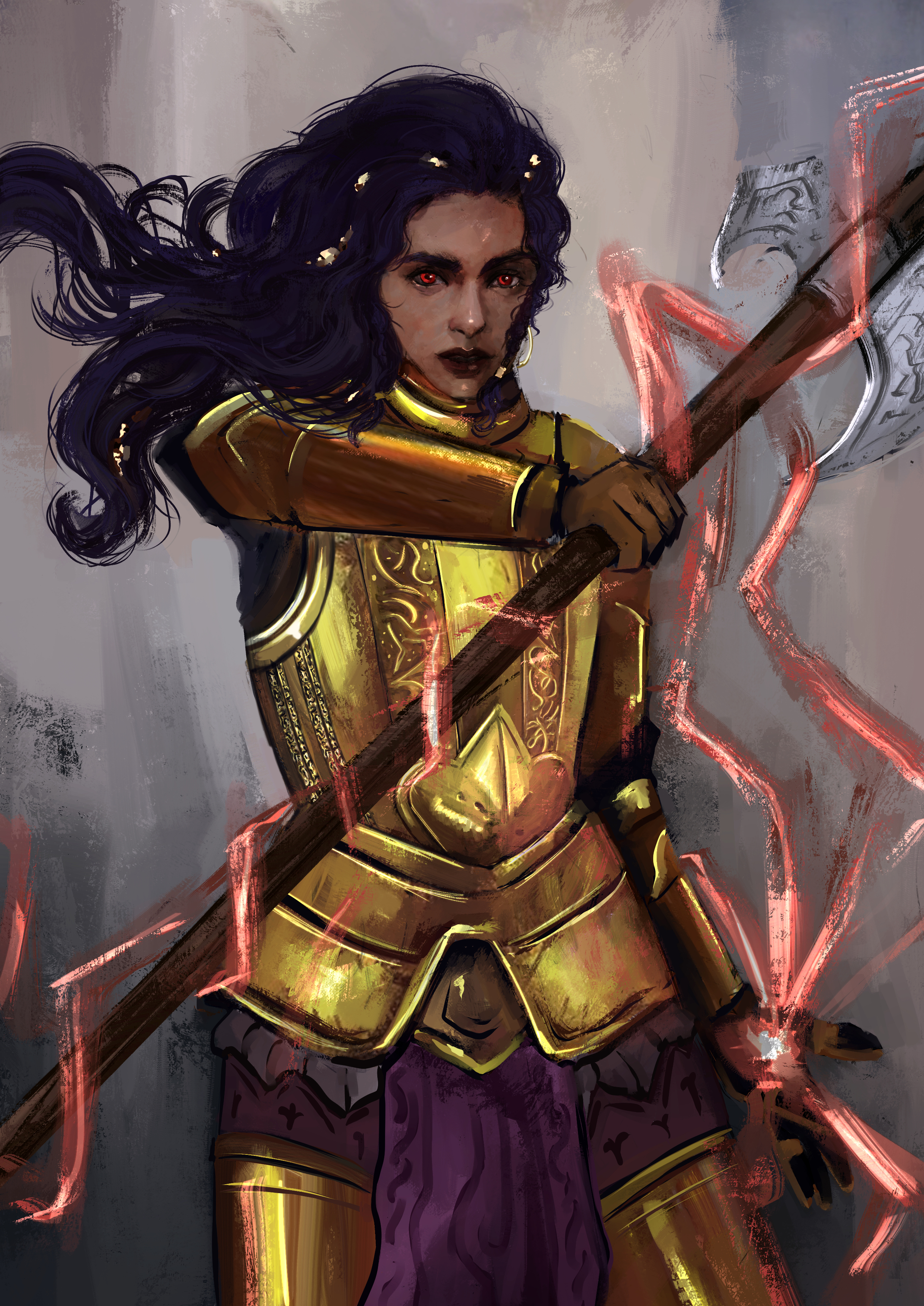
Sir Izar Edenveil, known sometimes as the Young Echo or, more commonly, the Eye of Oremis, is the eldest daughter of Deunoro Churchbane and Eskarne Edenveil. If you ask the right people in Oremis, some might remember her as a spirited little girl who clung desperately to her father with one hand while pointing to the fruit stalls with the other, much to the merchants’ delight.
When Izar was 10 years old, her father went on campaign to put down Inquisition activity in Magra, a Church stronghold — an event that later became known as the Siege of Magra. At Magra, Deunoro was captured and held for weeks by High Inquisitor Mefael de Béjar and his elite squadron of inquisitors and sympathetic casters, formed specifically for the Churchbane. Around the same time, Izar’s mother, Eskarne, was killed. Deunoro was rescued by his sister, Oihane, but came home changed, angry and aloof.
For Izar, the aftermath of Magra meant grieving both of her parents. Close to Deunoro growing up, she found it difficult to maintain a relationship with him because of the distance he put between him and his children after Eskarne’s death. Nevertheless, Izar and Deunoro’s relationship began to thaw slowly after she manifested her First Echo. While they haven’t yet returned to the easy affection that existed between them before Magra and Eskarne’s death, he is undeniably much closer to her than he is to her siblings — much to the consternation of her older brother, Zilar.
Izar came of age at the end of the Third Oremisian Uprising, and intimately knew the differences of life before and after Oremis’s complete independence from the Church of Basca. She was knighted at 17, right in time to deal with the Inquisition knocking at their gates and dedicate her life to the freedom of casters all across the kingdom. Despite protests from older knights who thought she came by her knighthood because of her parentage, she proved to be an extremely skilled fighter. This has had the unfortunate effect of instilling in her a need to constantly prove herself, but prove herself efficiently, so that — in her father’s words — no time or resource was ever wasted, least of all on her, when they could be used for something else. After all, he said, as Edenveils, they had everything they could ask for — why want more?
At the age of 19, Deunoro granted Izar the permission to form her own personal squadron, and gave her complete freedom over who she chose to name to it. Later known as ————————, Izar’s hand-picked guard consisted of —————————————————————, and their loyalty to her and to one another was unparalleled.
Just as her father has his Inquisitorial archnemesis, so too, does Izar. She first met High Inquisitor Narciso de Barradas across the battlefield on the Fields of Vaseis when she was 21.
[The Pyres of Olcanía]
During a solo reconnaissance mission to Cortesi, Izar was tasked by her father to investigate strange rumours in the north, in a little whaling town called Songana...
Lorem ipsum dolor sit amet, consectetur adipisicing elit, sed do eiusmod tempor incididunt ut labore et dolore magna aliqua. Ut enim ad minim veniam, quis nostrud exercitation ullamco laboris nisi ut aliquip ex ea commodo consequat.
Lorem ipsum dolor sit amet, consectetur adipisicing elit, sed do eiusmod tempor incididunt ut labore et dolore magna aliqua. Ut enim ad minim veniam, quis nostrud exercitation ullamco laboris nisi ut aliquip ex ea commodo consequat.
the architecture of power
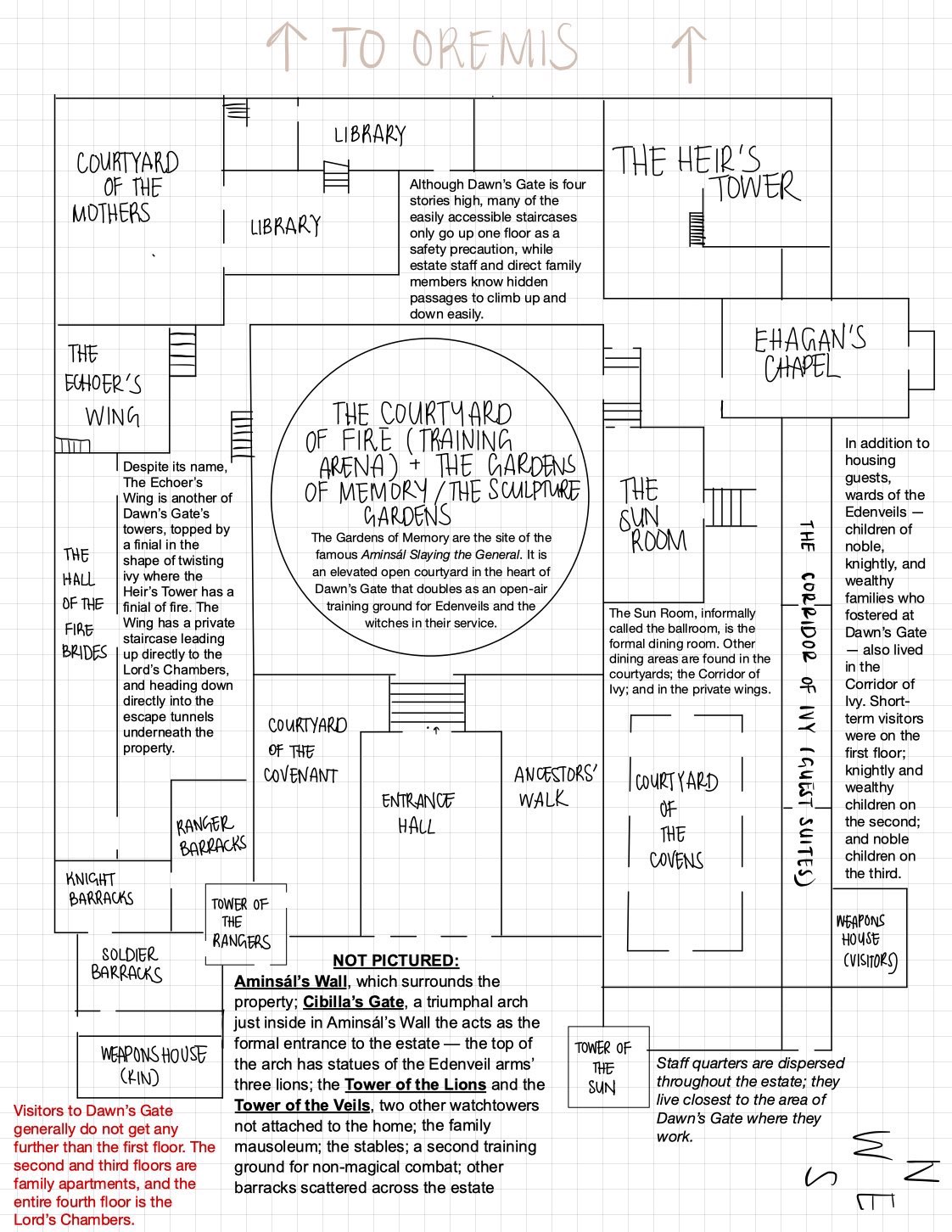
Dawn's Gate (Or., La Tarrèrta de Ilfára) is the ancestral home of the Edenveils. Built atop Oremis' easternmost hill, construction began shortly after Ehagan de Aminsál signed the covenant with the Church and agreed to deliver the Oremisian covens. The hill, which is now private property of the family, was posthumously named Ehagan's Crown upon the insistence of his wife, Cibilla de Sixeni. Of note, due to limited access to the estate and its archives, as well as general reticence from the Oremisian Edenveils to publicly speak about their home, most of what we know about Dawn's Gate today is put together from authenticated artist sketches; facsimiles of sources from the Oremisian archives; and hearsay.
The main entrance of the house faces eastward to meet the rising sun, but some posit that it was also a way to impress upon Church officials that the Edenveils were capable of casting their own shadow over Oremis, too, in a bid to maintain their autonomy from the religious institution.[16] Anatole Lacan, "Defenders of the Faith: Early Floorplans for Dawn's Gate," Bascan Art & Architecture 49, no. 1 (XXIX): 3–47. Heavily warded against portalling, Dawn's Gate is only reachable on foot or on horseback. Visitors who wish to see the estate during the annual Sun Parades can rent mules or horses at the foot of the hill. In addition to the climb, which begins on the western end of the property, visitors must make their way to the fortress' eastern entrance before entering.[17] Bascan Department of Tourism, Visiting Oremis (Magra: Bascan Department of Tourism, XXXX).
In its earliest iteration, the estate's four watchtowers — The Tower of the Sun; The Tower of the Rangers; The Tower of the Lions; and The Tower of the Veils — were meant to stand in as the paws of a lion, and the estate itself the body and the head. Over the years, subsequent Edenveils renovated and added onto the property. While the Towers of the Sun and the Rangers remain attached to the main house today, the Towers of the Lions and the Veils were demolished and rebuilt along with the original western wing of the house following severe damage during the Second Oremisian Uprising. Today, the latter two towers now form "paws" on Aminsál's Wall, fortifications of Oremisian limestone that surrounded the entire property, standing on either side of Cibilla's Gate, a triumphal arch carved out of imported Gervasini marble.[18] Anatole Lacan, Pedestals for the Saints of War: Dawn's Gate after the Second Uprising (Magra: University of Magra Press, XXYX). Crowning Cibilla's Gate are the three lions of the Edenveil arms.
Dawn's Gate has an assortment of notable features, including its multiple courtyards, the largest of them being The Courtyard of Fire, otherwise known as the Gardens of Memory, home to the original bronze version of Aminsál Slaying the General and to Sera Edenveil as the Mother of Flowers, the marble sculpture at the heart of the gardens. The house is also attached to Ehagan's Chapel, which had once been consecrated ground sanctioned by the Church itself, and which has its own belltower. Just off the entrance hall is Ancestors' Walk, the portrait gallery dedicated to all of the family's Echoers. Aside from the watchtowers, Dawn's Gate also boasts The Heir's Tower, topped by a finial of fire, home to the current heir of the family, and The Echoer's Wing, also a tower despite its name, topped by a finial of twisting ivy and home to all Echoers. In Deunoro's generation, he lived separately in the Heir's Tower, while the households of his three younger siblings established themselves on the three upper floors of the Echoer's Wing.[19] dela Cruz, The Witch of War.
The spandrels of the Corridor of Ivy and the Hall of the Fire Brides are decorated with the coats of arms of the brides who had married into the Edenveil family. The Corridor houses guests, but it is also home to Edenvellian wards who were fostered at Dawn's Gate in order to build strong ties between the Edenveils and other Bascan families, whose claim on power shifted according to the Oremisian and Bascan political landscapes. Dawn's Gate also boasts multiple libraries; several art galleries peppered with original paintings and sculptures, mainly from Bascan and Ardenian masters, but other continental artists as well; an ornately decorated ballroom and formal dining room known as the Sun Room; elaborate staircases with marble balusters inlaid with gold ivy and intricate filigree; and two calefactories.[20] Sonia Benitez, Anatole Lacan, and Aleksandra Driega-Browne, eds., The Golden Years of Glory: The Art of the Edenveil Galleries (Magra: National Museum of Basca Press, XXYX), exhibition catalogue.
Very little of Dawn's Gate is open to public visitors, and only during the week of the Sun Parade, leading up to the summer solstice. These areas are the entrance hall, the Courtyard of the Covens, the Sun Room, and the narthex of Ehagan's Chapel. Whereas friends and members of the extended family generally have the freedom to move about the first floor, visitors are chaperoned at all times; all other sections are guarded and blocked off. Nevertheless, the Edenveils host local Oremeños and tourists alike during this week, and provide food and merriment leading up to the procession to Oremis Archcathedral at the end of the week.[21] Bascan Department of Tourism, Visiting Oremis. The second and third floors are family apartments reserved for those who are directly of the blood, while the entire topmost floor is referred to as the Lord's Chambers.
the art of glory
Despite exhibitions such as The Golden Years of Glory: The Art of the Edenveil Galleries (National Museum of Basca, Magra) and Edenveil Portraiture (Oureros Museum of Fine Arts, Oureros), the latter of which featured loans to the oMFA from Oremis, a complete monograph of the works found in Dawn's Gate is currently impossible due to lack of access to the estate and its archives. Nevertheless, historians and art historians have managed to piece together what we do know thanks to artists' surviving commission letters, journals of visitors during Sun Parades, memoirs of Inkerzan Edenveils who have made the pilgrimage to Dawn's Gate, and the sole interview provided by Argiñe Edenveil, founder of The Edenveil Foundation and Professor of Mediaeval History at Royal College Magra.[26] Argiñe Edenveil, "The Mouthpiece of Generations: An Interview with Professor Argiñe Edenveil on the Groundbreaking of The Edenveil Foundation," by Daniela Villaseñor, Mediaeval Studies 57 (Spring XXXX): 57–64.
☾ Paintings While many come to Dawn's Gate in search for its art galleries, none outside of the family have ever actually seen them. And though Domenikos Kres's Landscape of Oremis greets visitors in the entrance hall, and assorted portraits line the Sun Room, dozens if not hundreds of works remain uncatalogued to the public. One tourist who attempted to learn more about the Edenveil galleries was the Bascan-Garverri essayist Ame Maurideaux, who opined to his sister, "Reticent though they may be — just as stoic as Mère said the folks of her birthplace would be! — not even a smile! — I found one who humoured me and said that there was at least portrait one gallery near us in the entrance hall, but then, if there were any others, that was above his paygrade…[27] Ame Maurideaux to Aglaë Hemèrre, in The Essential Maurideaux Reader, ed. Honoria del Orre (Orçon: Garverre College of the Humanities Press, XXXX).
Historians of the Bascan painter Rodrigo del Vela discovered the existence of at least three paintings by the old master purportedly in the Edenveil collection, corroborated by the artist's records. These are The Liberation of Brieira, a depiction of the victory and subsequent marriage of Ehagan III at Brieira; Vraikar at the Forge of the First Mother, showing Vraikar Edenveil making her brother's first runed suit of armour; and The First Mother at her Mirror, a contemporary depiction of the creation myth of the fire witches to which later Edenveils subscribed. Del Vela also possessed a series of sketches simply titled Views of the Gardens of Dawn's Gate, insinuating that he might have been hosted by the family for a time.[28] Belén Espinosa, Rodrigo del Vela: From Basca to Ardenia (Magra: University of Magra Press, XXXX).
☾ Sculptures Sculptures play a large role in the artistic programme at Dawn's Gate, and are more highly visible than the paintings in the family's Oremisian collection. Although the Edenveils took advantage of their deep coffers and far-flung network to amass art from masters abroad, this did not mean they were remiss in patronising their own. Among the talented Bascan sculptors in the collection is Ignacia dela Perla, notable for being the earliest documented female Bascan sculptor. Though she worked in polychromed wood, such as in Mother of the Wilderness, she was heavily influenced by the Gervasini sculptor Berna, whose dynamic marbles are also represented at Dawn's Gate, most notably by her Portrait of Isabela Mondexar, which "seemed to capture Mondexar right before she started speaking.[29] Maurideaux to Hemèrre. Bronze is also represented in the collection, such as the famous bronze original of Aminsál Slaying the General by Donate di Bardi.
☾ Stained Glass Most of the stained glass windows at Dawn's Gate are in Ehagan's Chapel. Although only the narthex of Ehagan's Chapel is open to the public during Sun Parade weeks, written accounts and artistic depictions of its interior are considerably more available compared to other aspects of the estate. The Edenveils commissioned artists from Gervasi for their family chapel's stained glass, with the private intent of surpassing the decorations of the Mother Church in Magra, which itself had only been constructed after Oremis Archcathedral was finished. The windows depict scenes of the First Mother's life and stories of the foundation of Oremis, interspersed between Church teachings; notably, the Edenveils only commissioned scenes of teachings that had been lifted directly from the covens.